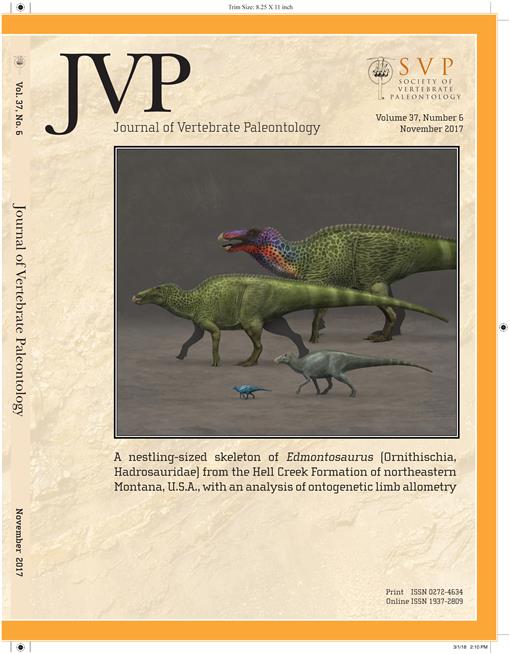Alicia Álvarez, Marcos D. Ercoli
Journal of Vertebrate Paleontology 37 (6), (1 November 2017) https://doi.org/10.1080/02724634.2017.1385476
Dinomyidae is a South American caviomorph family that was a very diverse group starting in the Miocene, but is now represented by a single species, Dinomys branickii Peters, 1873. An exclusive feature of dinomyids, not recorded in other mammals, is the presence of accessory articular structures lateral to the occipital condyles, termed paracondyles. In a 1916 study of †Tetrastylus intermedius Rovereto, 1914, an extinct dinomyid from northwestern Argentina, Carlos Ameghino suggested that the paracondyles enhance the support of a large and heavy head. At present, this is the only proposal to explain the presence of these structures. In order to validate this hypothesis, we performed descriptive, metric osteological analyses, and muscular reconstructions of the occipital and cervical regions of †T. intermedius, D. branickii, and other dinomyids, in a comparative context of rodent diversity. We confirmed that, similar to some other living rodents, D. branickii possesses a relatively large head. Conversely, †T. intermedius possesses a size-proportionate head and has larger paracondyles than D. branickii. Our analyses suggested that fossil dinomyids would have performed more marked sagittal movements than D. branickii, and that paracondyles and the whole occipitocervical configuration of dinomyids are specialized for restriction of movements of the head and neck. We rejected the single previous hypothesis and proposed an alternative and novel one, in which paracondyles, and other occipitocervical traits present in dinomyids, as well as in erethizontids, could be related to restricted movements and linked to ecological convergences for stealthy and slow arboreal locomotion.


